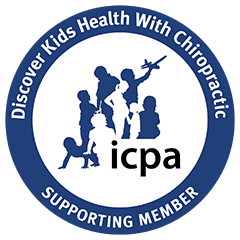What is Posture?
We all remember being told at some point during our lives to “stand up straight!”. So, what does posture actually have to do with anything?
Posture is the position of the parts of the body in relation to the spine. It is not simply a matter of standing up straight. It is actually about the proper alignment of your spine to your body.
Posture and the Young Child
As an adult, we can begin checking our children for signs of bad posture as soon as they begin to stand upright! Signs of bad posture can include a head, shoulders, or hips tilting to the left or right is an early sign that your child may be starting to show signs postural distortions. This may seem early for a child to have misalignments to their spine, birth injuries and falls that take place when a child is learning how to walk have already begun to affect their posture.
Posture and the Pre-Adolescent
When a child is between the ages of seven to ten, we begin to see a new shift in posture. Misalignments in the spine are more likely to be caused by minor falls, injuries associated with sports, as well as injuries from playground equipment or trampolines. Along with all of these, this age group also begins to spend more time sitting at desks, watching TV, and being plugged in to devices. You may also see your pre-adolescent children hunched over while sitting or texting on their phones or gaming controllers. With the chronic tension on the back, the body will respond and adapt to this improper alignment and show up as postural deviations. Some of these things may be:
- A head tilt: This can reflect a misalignment of the neck. As an adult this can lead to chronic migraines. It can also lead to chronic tension headaches, chronic neck pain, dizziness, and the list goes on!
- A shoulder tilt: This can reflect a mid-back issue that can lead to long term shoulder blade pain. It can also lead to shoulder problems and issues with taking deep breaths.
- A hip tilt: Which usually shows signs of a low back or tailbone problem. This can also be spotted if a child stands with a toe turned out. This can be an early sign of low back pain, sciatica, numbness and tingling in the legs, and more long-term issues of pain and degeneration.
Posture and the Pre-Teen/Teen
Many of the issues our children face in their pre-adolescent years are magnified as they become teenagers. These are compounded with more stress to the spine. The most obvious issue is the addition of heavy backpacks. This leads to increased strain to the spine, especially when overloaded or carried improperly. There is also increased hunching over while spending more time on computers for homework and more time texting as technology usage increases with age. As your teenager has been dealing with the postural deviations for years now, they may become more evident. This strain will begin to affect the nervous system and they will begin to show signs of pain, headaches, and with teenage girls, menstruation problems.
You may also begin to see the shoulders rolling forward and as this happens the head will also move forward. Considering that the head is like a 6-10 pound bowling ball, this can lead to tremendous strain on the neck and upper back muscles. If you ask your teenager to stand up straight and they complain of discomfort or pain, this is the sign of a problem and they should be evaluated by Dr. Elyssa.
Posture and the Adult
These postural deviations that begin as a child and are left undetected or uncorrected, will generally lead to bigger problems as these children become adults. In adults, these head, shoulder, and hip tilts leads to signs of chronic pain and tension. With time these can lead to balance issues which lead to falls and more serious injuries.
Four Steps to Performing a Postural Exam
This is a quick and easy way to see if your child has misalignments:
- Have your child face away from you. Look at the bottom of the ears. Check to see if one is higher than the other this is a head tilt and sign of a possible neck misalignment.
- Look at the shoulders. They should be level; if not this is a sign of a possible mid-back misalignment.
- Place your hands on your child’s hips. When one hand is higher than the other this is a hip tilt and can be a sign of a misalignment of the hip, sacrum, or low back.
- Next look at the side view of your child. Their ear lobe should be directly over the shoulder. Another sign of a potential problem is if their shoulders are hunched or rolled forward.
Check your child for any of these signs of postural deviation. It’s a sign that they are headed down a path of pain and degeneration. It can be corrected!
Learn more about the benefits of chiropractic care and the benefits of making it part of your family’s wellness lifestyle. Click to schedule a complimentary consultation with the Body & Balance practitioners today.
Resources: Dr. Claudia Anrig-The Wellness Family



